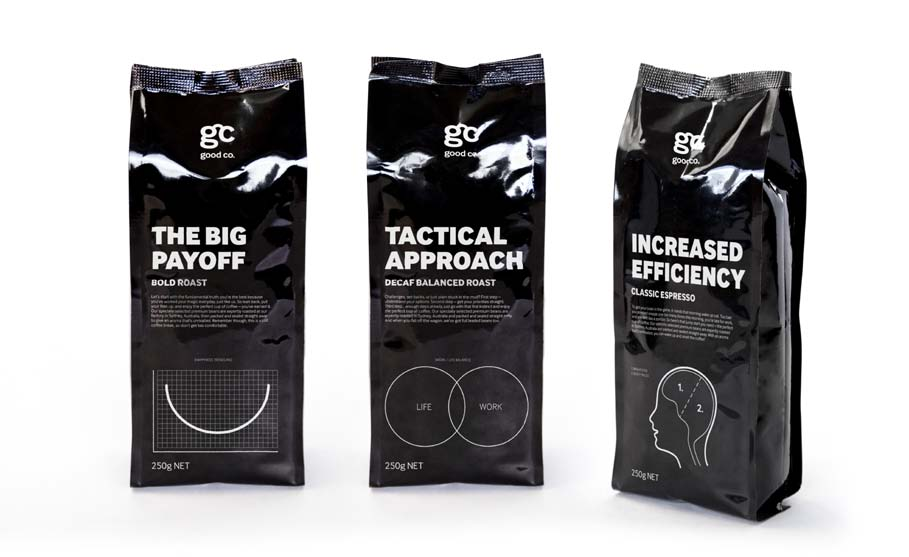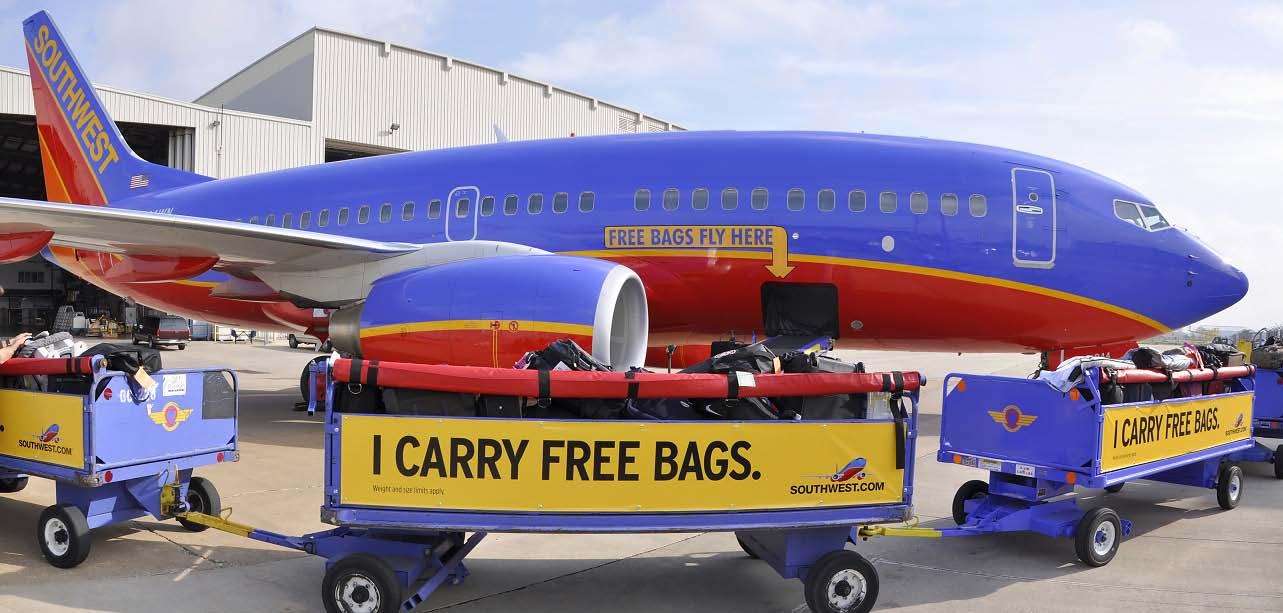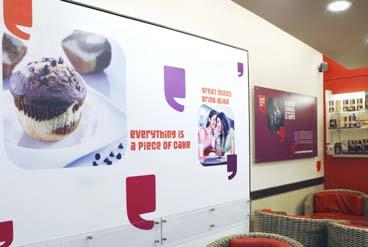Does Your Brand Sound as Good as it Looks?

We preen in front of a mirror every morning and adjust our physical appearance, but when was the last time we checked how we sound? The same is true of brands. Brand managers spend vast amounts of time thinking about what should be communicated through the visual identity, but typically very little time considering how the brand should sound. Few brands have guidelines that address voice, and for those that do, it is rare that they successfully explain how to express personality through fresh, sharp, on-brand communications.
Is it important for a brand to sound good? According to Nancy Daniels, international speaker and voice specialist, 55 percent of a person’s image is attributed to appearance, 37 percent to speaking voice, and 8 percent to content (what is said).¹ Translate this to brands, and we can surmise that approximately 45 percent of a brand’s image can be attributed to what it says and how it says it. Calculate the verbal touchpoints in your brand’s universe — from how your receptionist greets callers, to what your CEO sounds like at your annual shareholder’s meeting, to the tone of your print and online communications, to the text on packaging, and to copy in ad campaigns — and it quickly becomes clear how it adds up to this significant percentage.
Brand voice, the translation of a brand’s positioning and personality attributes into a writing style, is a much-neglected, but an extremely important aspect of brand communications — especially in this digital age. Voice plays a powerful role in shaping brand perceptions, and the variety of voices is larger than you might expect. A brand’s voice can be authoritative (McKinsey), straightforward (FedEx), powerful (Caterpillar), friendly (Southwest Airlines), playful (W Hotels), personal (Yahoo), or even tongue in cheek (Virgin). All of these brands use voice as a distinct element of their personality in a way that differentiates them from competitors. These brands are credible and powerful because their voices are consistent with, and reinforce, their brand promises. Southwest Airlines regards people warmly, so its persona is friendly. McKinsey positions itself as the foremost expert in its field, so it speaks with great authority (and backs up everything with research).
(Good Co. turns typical corporate speak into dryly humorous commentary that also references the type of bean in each bag).
If a brand’s voice does not help communicate its positioning and personality, it undermines the core brand promise. Imagine Citi trying to sound funny instead of speaking as a trusted financial advisor, or Target’s voice implying it’s a more sophisticated retailer than it is. Most brands don’t get their tone wrong — they just fall into the trap of sounding like everyone else in their category. Scan five print ads for mid-tier IT companies and you’ll be hard-pressed to tell one from the other except by their logos.
Of course not every brand’s voice should be screaming with personality. Sometimes a good voice is invisible. Rather than call attention to itself, a voice can smoothly point toward other significant brand qualities. The Economist works this way. The brand’s voice is well defined, but readers hardly notice because its focus is on delivering news and opinions (except in advertising, when its personality is made more explicit). This works well for the media landscape in which the Economist brand operates.
Brands that pay equal attention to verbal and visual identities end up stronger and more differentiated than competitors. How can you ensure a powerful verbal identity for your brand? When a brand voice is consistently well executed across all touchpoints it helps tell a unique story, connects it to target audiences, and reinforces what the brand stands for.
Start with a name
Storytelling is increasingly important for brands, especially in this world of constant and instantaneous communication. Brand voice can play a key role in telling your story in an engaging way. Voice should be reflected in every touchpoint: from name to packaging copy to advertising. A good name can set the tone for a brand and be the first indicator of its personality.
Australian coffee company Good Co. understands this well. Its name is a play on the dual ideas of “being in good company” and “enjoying good coffee.” Its simple name effectively expresses its brand promise, “a break from the routine” — perfect for a café chain located in office building lobbies that caters to businesspeople. The Good Co. name helped inspire its verbal and visual worlds, which are intended to appeal to corporate professionals for whom good quality coffee is paramount.
Good Co.’s brand voice draws from the corporate speak its customers daily endure; it turns typical suit-jargon into dryly humorous commentary that also references coffee types (for example, a bold roast named “The Big Payoff” and a decaf roast called “Tactical Approach”). This unique voice is present in all elements of the customer experience: from signage and menus to coffee cups and sugar packets. Packaging for bags of coffee to take away acts as a sneaky Trojan horse for Good Co. to extend its brand into offices, homes, and elsewhere off-site. The brand’s narrative is refreshing and snaps the suited coffee consumer out of her humdrum routine, offering fun mental stimulation to complement her favorite pick-me-up.
As a result, Good Co. emerges as a brand with character in a market of generic, average, and similar-looking office lobby cafés. Its brand story is about wit, wordplay, and comedic corporate interaction. With Good Co. many Australian office workers can delightedly start the day in good company — and with a good laugh — and arrive at work with a smile.
Good Co.’s branding was so successful that the new company secured financing much earlier than it expected to. Aspiring franchisers, intrigued by the unique brand, have also been contacting the company, clamoring for the opportunity to own a café.
Connect with your audience
Brand voice is a great way to differentiate your brand and connect with your target customers by speaking their language. India’s Café Coffee Day wanted to attract a core audience of upwardly mobile 18- to 25-year-olds. Its cafés are intended to act as the modern day adda, or social hub, with coffee as the catalyst for free-spirited conversation, meeting friends, and inspirational discussions.
Starting with signage on café entrances stating “push for the best coffee” and “start everything with a nice brew,” customers are immersed in Café Coffee Day’s verbal world, where the language of its young, hip target audience is spoken fluently. Customers order their favorite drinks and snacks from menus that read, “give your coffee the company of delicious twin pack cookies,” further conveying the brand attitude of cool intelligence coupled with a good sense of humor. Coffee is sipped from mugs that also speak to young customers’ tastes and attitudes with sayings like, “coffee smoother than words,” “my coffee inside,” and “I will share anything except this latte.” Looking around the cafés, one sees wall graphics that further demonstrate the brand’s wit, proclaiming, “If these walls could talk, they would join your conversations,” “great minds drink alike,” and “chat, drink, and be merry.” Café Coffee Day’s voice connects the brand to India’s youth generation better than the other coffee and café brands in the country.
Café Coffee Day’s verbal personality is reinforced by the graphic element of the “dialogue box,” oversized quotation marks resembling a comic-style “talking box” and open-mouthed talking face. It is used throughout the cafés in conjunction with copy to help convey the conversational, interactive, and playful brand voice. The dialogue box reinforces the idea that Café Coffee Day cafés are modern-day addas, a perfect place to stop and engage in chats and philosophical debate.
Reinforce what the brand stands for
Every touchpoint provides the opportunity to reinforce the brand promise. Hotel brands with a distinct voice, like W Hotels, do this well across the entire customer experience. W is always fresh, surprising, stylish, almost magical, and very indulgent. It describes its Retreat and Spa in the Maldives as: “Cast away yet connected. Natural yet designed. Secluded yet welcoming. W Retreat & Spa–Maldives is a private island and luxury playground, where style flirts with soul in a wonderland of white-sand beaches, turquoise lagoons and breath-taking reefs.” It’s never boring: “Not your average lobby. Meet, greet, flirt, play, sip and savor in this modern playground.” Never mundane: “Who loves your pet? Experience our Pets Are Welcome (P.A.W.) program so your furry friends enjoy the visit as much as you.”
Southwest Airlines’ voice is fresh and demonstrates the brand’s warm regard for its customers.
Cafe Coffee Day’s applications convey the brand’s playful sense of humor, inviting young customers to engage in fun debate and conversation).
Whether it’s the room nomenclature or the language used when checking in at reception, there’s a sense of oomph and oh là là when interacting with this brand: Wonderland. Whatever, Whenever. Wow. When tone of voice is consistently applied, it gives customers many means of recognizing the brand and ways to understand its promise. And, perhaps most importantly, it kindles desire for another W experience.
Make it work
Once a brand voice is commissioned and approved, all verbal touchpoints must be made on-brand. It is necessary to be steadfast in your commitment to what the brand stands for. Here are some tips for success:
- Don’t fall into the trap of thinking you can write well. Especially writing well in the voice of the brand. Most of us (especially those in marketing!) are poor writers. Find a good copywriter who really “gets” the soul of the brand and can write in a way that best expresses it.
- Don’t approve brand copy by committee — good writing will invariably get watered down. The integrity of the writer’s original thoughts will be lost and the brand voice will be sunk.
- Don’t stop the execution at the launch campaign or the website. All brand communications must sing in the brand voice. This is especially critical for companies that have reams of corporate and product literature for various geographies and different stakeholders. Don’t change your voice to suit different audiences. We may talk differently at home than we do in the office, but we’re the same person. This also applies to your brand.
- Don’t settle for anything short of a great story on every piece of communication. Your unique story is what will set your brand apart.
- Do push your writers — relentlessly. Get them to be sharp, focused, clear, and soulful in a way that is true to the brand. And don’t forget: Your media spokespeople must be on board with the brand voice, too.
The benefits of a brand that sounds as good as it looks are immense, and well worth the added effort. Successfully differentiating your brand’s voice is similar to making a good impression on guests at a dinner party — a well-defined personality makes you memorable. And, ideally, results in another invitation.
1 Nancy Daniels, “Sound As Good As You Look,” searchwarp.com (26 October 2008); searchwarp.com/swa389760.htm (accessed 7 July 2010).
Lulu Raghavan is country director for India in the Mumbai office of Landor Associates.
© 2010 Landor Associates.
All rights reserved.
Landor Associates is one of the world’s leading strategic brand consulting and
design firms. Landor is part of WPP, one of the largest global communications services companies. Visit us at landor.com.
www.landor.com
Beijing
Chicago
Cincinnati
Dubai
Geneva
Hamburg
Hong Kong
Jakarta
London
Mexico City
Milan
Mumbai
New York
Paris
San Francisco
Seoul
Shanghai
Singapore
Sydney
Tokyo
hello@landor.com
Main visual courtesy: https://www.flickr.com/photos/nikil/




